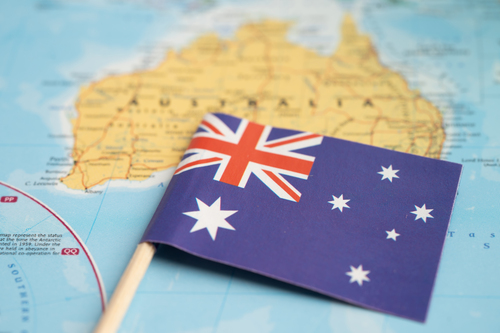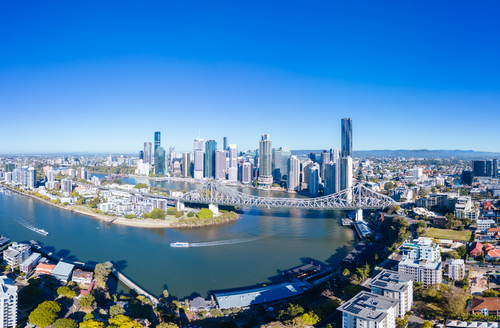Australia's skilled visa programs are designed to select people who will make a positive contribution to the Australian economy and labor market and assist Australian businesses to access workers with skills that cannot be met in the local labor market.
Since the new government has been in place, the Department of Home Affairs has finalized over 2,780,000 Visas.
This includes over 43,000 temporary skilled applications and over 47,000 permanent skilled visa applications.
This has been shown clearly in the processing of the Visa 189 invitations.
The new labor government has pointed out that their primary focus at this stage is to:
- Clear the visa backlogs caused by the delay in processing time during Pandemic Covid-19.
- Address skills shortages
Minister Andrew Giles states that the visa backlog will come to a "manageable" level before Christmas.
Currently, the government has produced new direction 100 to address the issue of businesses crying out for skilled workers.
Direction Number 100 - Order of Consideration - Certain Skilled Visas
The order of priority for considering applications is specified in this Direction to ensure the appropriate allocation of resources in considering and disposing of applications, and that certain cohorts of applications are given priority.
This writing will talk more about the direction and how it affects your decision on which occupation you should choose for Australian PR under the skilled migration program.
Importantly, this direction does not change the composition of the skilled migration occupation lists, nor the requirements set out for each visa stream.
This is designed to process more skilled applications faster and respond quickly to the labor market.
This direction removes the Priority Migration Skilled Occupation List (PMSOL) which has a very narrow focus on specific skilled occupations.
This Ministerial Direction number 100 helps speed up processing for all occupations and makes the process less complicated.
The following skilled visas are subject to Ministerial Direction No. 100:
- Subclass 124 (Distinguished Talent)
- Subclass 186 (Employer Nomination Scheme)
- Subclass 187 (Regional Sponsored Migration Scheme)
- Subclass 188 (Business Innovation and Investment) (Provisional)
- Subclass 189 (Skilled - Independent)
- Subclass 190 (Skilled - Nominated)
- Subclass 191 (Permanent Residence (Skilled Regional)
- Subclass 457 (Temporary Work (Skilled))
- Subclass 482 (Temporary Skill Shortage)
- Subclass 489 (Skilled - Regional (Provisional))
- Subclass 491 (Skilled Work Regional (Provisional))
- Subclass 494 (Employer Sponsored Regional (Provisional))
- Subclass 858 (Global Talent)
- Subclass 887 (Skilled - Regional)
- Subclass 888 (Business Innovation and Investment (Permanent).
Work Visa Lawyers has Immigration Lawyers and Registered Migration Agents who can help you with all skilled visa applications.
Our specialists can speak a range of languages including English, Vietnamese, Mandarin, Cantonese, Portuguese, Punjabi, and Tagalog.
Please book an appointment with us if you would like to migrate to Australia.
Skilled Visa Offshore Priority - Any chance for onshore skilled workers now?
In this direction, it demonstrates that offshore applications will be prioritized.
Even though offshore applications are prioritized, but the government will still appreciate the contribution of onshore workers to the economy who must have been through the toughest time with Australia and seeking to get Australian PR.
Especially applicants who are working in the regional areas of Australia will continue to receive more incentives to stay and support the workforce.

Details of Ministerial Direction 100 - Skilled Visa Processing Priority
Thanks to the addition of 260 staff working on visa processing compared with the number recorded in May 2022, the number of invitations delivered has grown significantly.
This allows the government to prioritize tasks towards the issue of skills shortages.
Skilled visa applications are processed in the following order of priority:
Visa applications in relation to a healthcare or teaching occupation.
The Healthcare system and Educational system has been hit hard during the Pandemic.
Thus, at this stage, the number 1 priority should be to grant more skilled workers in these 2 sectors to come to Australia and fill the job vacancies.
We expect the government to provide more skilled visas to other occupations due to a quick cleanout in the system for Health and Educational related workers.
These workers often face complicating and time-consuming registrations and skills assessments.

Those are the ANZSCO groups which will be prioritized by the Department of Home Affairs:
Healthcare or Teaching Occupations
- ANZSCO Sub-major Group 25 - Health Professionals
- ANZSCO Minor Group 241 - School Teachers
- ANZSCO Minor Group 411 - Health and Welfare Support Workers
- ANZSCO Unit Group 1341 - Child Care Centre Managers
- ANZSCO Unit Group 2346 - Medical Scientists
- ANZSCO Unit Group 2721 - Counsellors
- ANZSCO Unit Group 2723 - Psychologists
- ANZSCO Unit Group 2725 - Social Workers
- ANZSCO Unit Group 3112 - Medical Technicians
- ANZSCO occupations:
- 134311 - School Principal
- 421111 - Child Care Worker
- 423111 - Aged or Disabled Carer
- 423312 - Nursing Support Worker
- 423313 - Personal Care Assistant.
For employer-sponsored visas, visa applications where the applicant is nominated by an Approved sponsor with Accredited Status.
Following businesses’ and unions’ expectations, Ministerial Direction 100 is designed to help small businesses seeking overseas workers.
That means, those employer-sponsored visas will be processed faster and made less complicated.
They have even stressed out the importance of the Temporary Skill Shortage Visa 482.
482 visa is the key to helping them respond quickly to the labor market needs.
To be successful and applied faster processing, the Accredited Sponsors in all sectors ought to be trusted ones and key businesses that drive economic growth.
Visa applications in relation to an occupation to be carried out in a designated regional area.
The allocation for state/territory nominated provisional visas has also increased significantly with most state/territory governments using these visas to encourage a greater level of skilled migration to regional areas.
The rise of DAMA and 494 Visa is also key to bring skilled workers to regional areas.
A lot more incentives are expected to be announced including facilitating Permanent Residency pathway or attractive income.
Lower skilled workers may also enjoy a lot of benefit of the skilled regional visa program.
Eliminates the Priority Migration Skilled Occupation List (PMSOL) and critical sectors.
Australia is facing a broader skills shortage which is no longer reflected in the PMSOL and critical sectors.
The government believes each sector has numerous occupations to recruit.
Some of those were not included in the PMSOL.
They would like to add more occupations to respond thoroughly to the workforce and create better services overall.
The cease of PMSOL does not mean that those occupations are paused in processing.
Those will still be processed faster given the support of the additional staff and funding announced in October
All other visa applications and reduction in the number of priorities
Those programs are currently under the primary focus of the Department of Home Affairs:
- Skilled Migration Program (Visa 189/190/491)
- Employer Sponsorship program (Visa 482, 494, DAMA)
The Direction 100 also points out that they will remove the priority for the Global Talent Visa program and Business Innovation and Investment program.
This is reflected in the allocation number given recently.
The report states that this reduction will help increase efficiencies in reducing processing times across caseloads.
However, Visa applications for the Global Talent and Business & Investment program will still be processed efficiently in line with the planning levels of the Migration Program.
Summary
This direction 100 is primarily focusing on bringing skilled workers to Australia to reduce the pressure of skills shortages.
Thus, it is designed to prioritize skilled visas such as Visa 491, visa 190, Visa 189, and some employer-sponsored visa 482 and 494.
They believe that, with those visas and the addition of funding and staff, the workforce market will soon recover to the pre-pandemic level.
In the current situation, offshore migration is on top priority.
This raises concerns for onshore skilled workers who are seeking for PR.
We strongly believe that this is only a temporary measure to address the skills shortage. Onshore applicants will still be processed quickly









